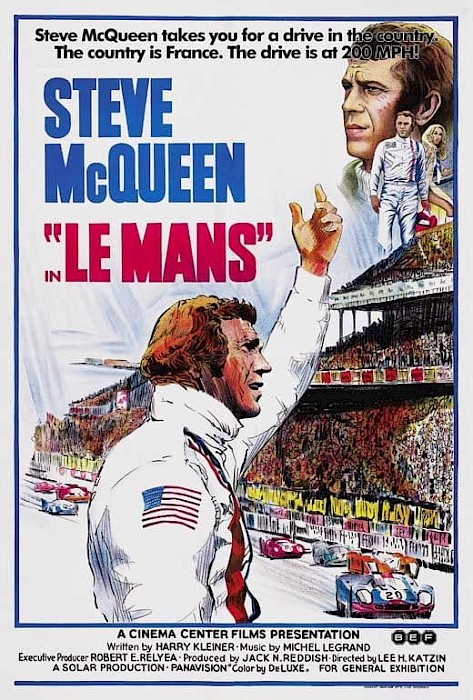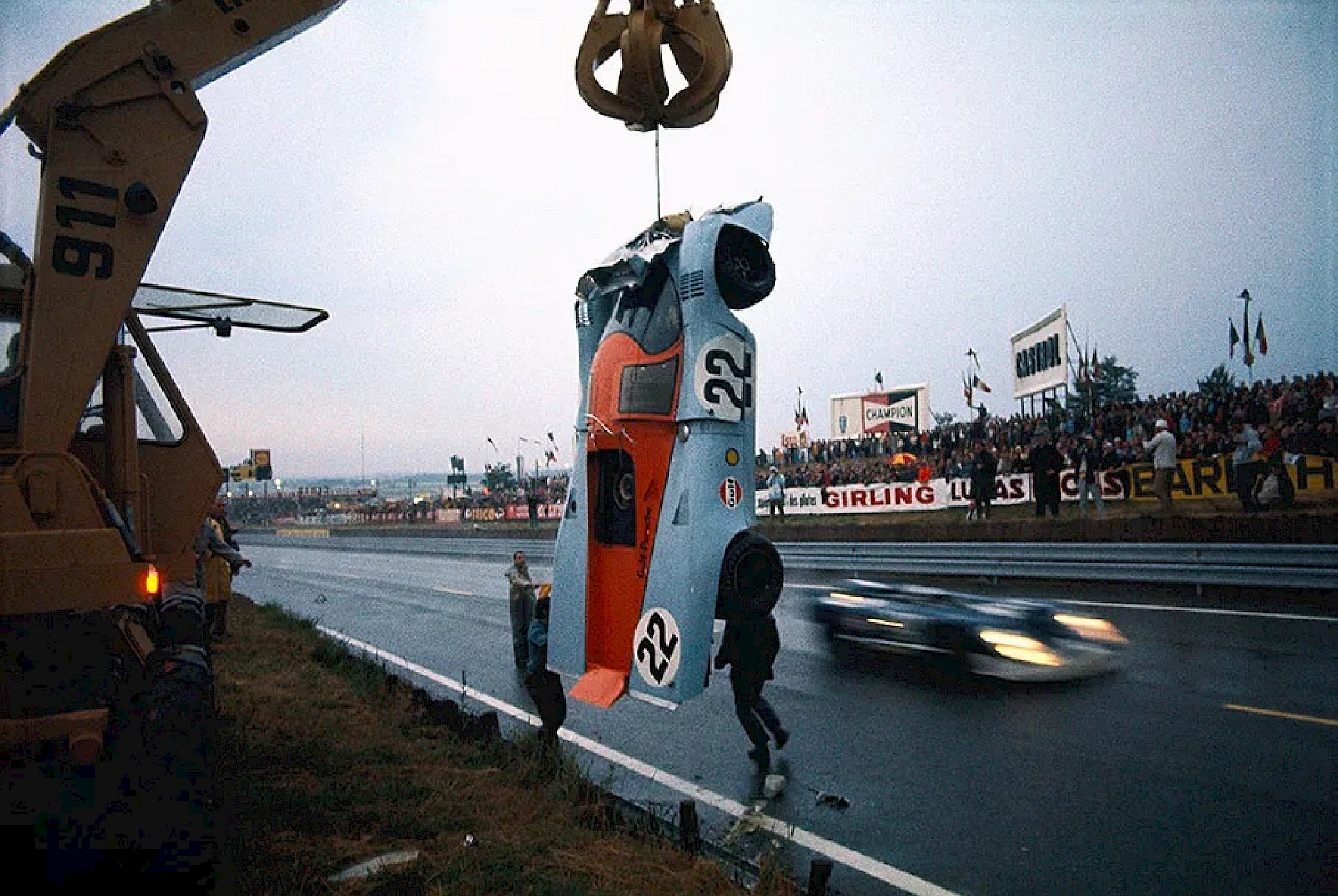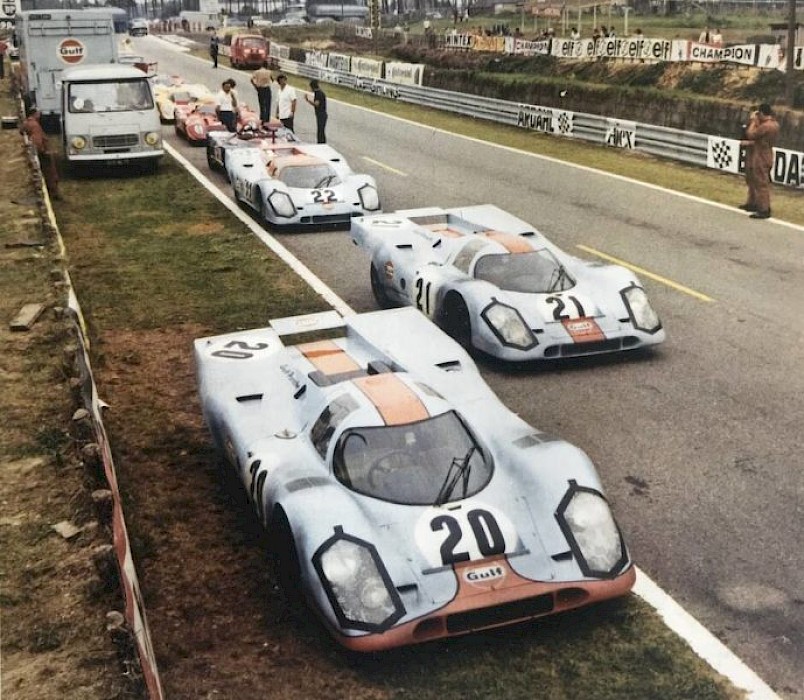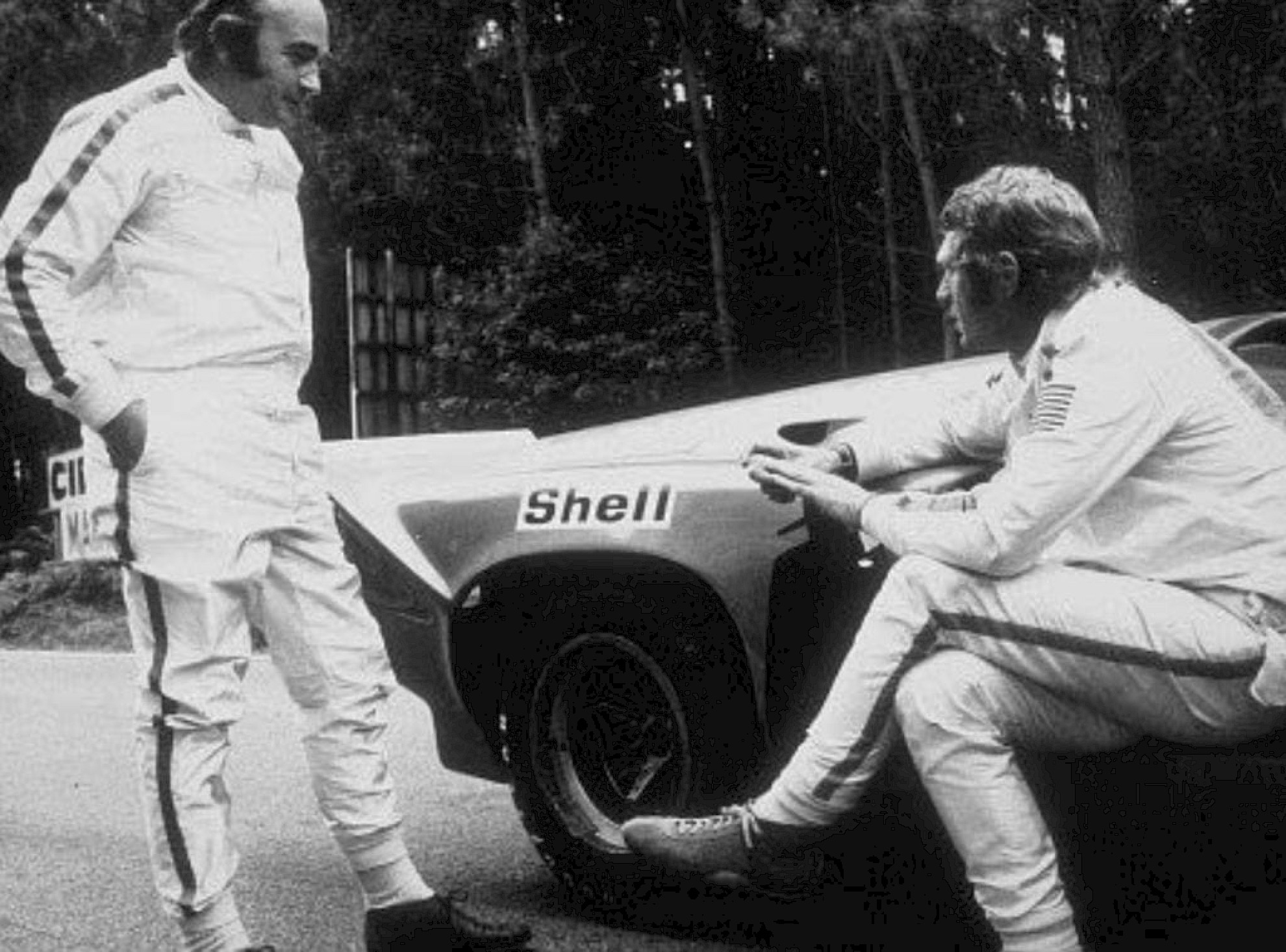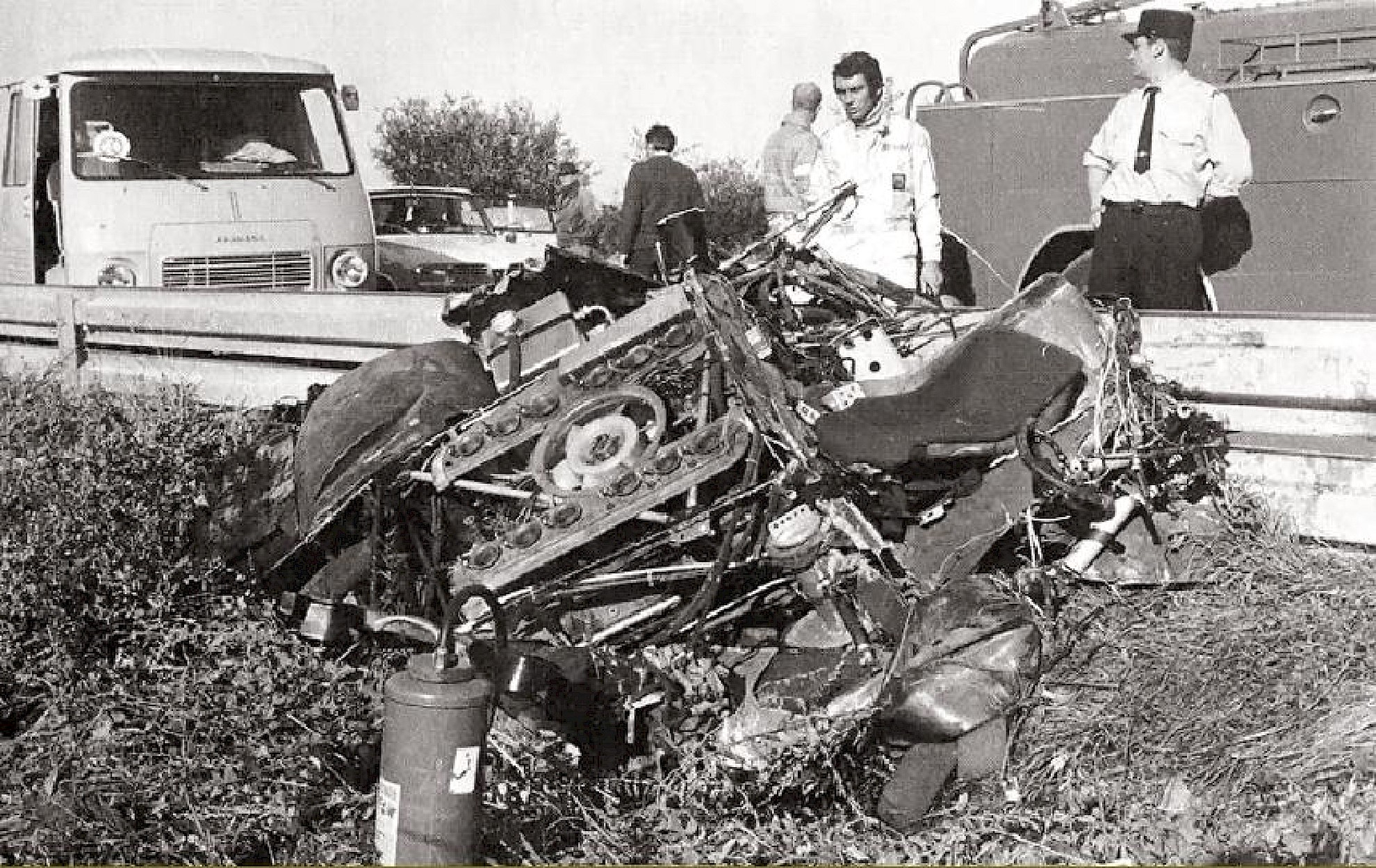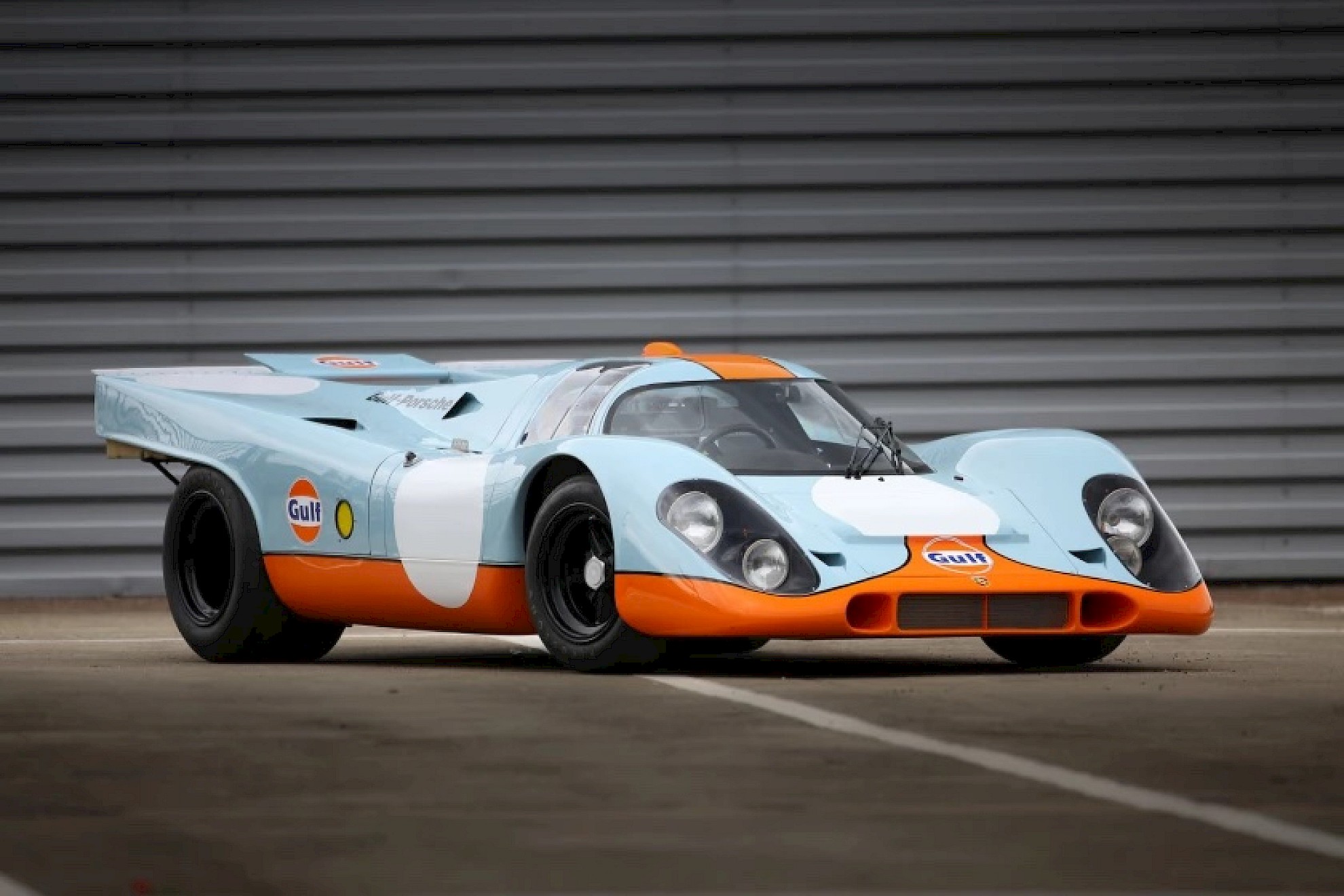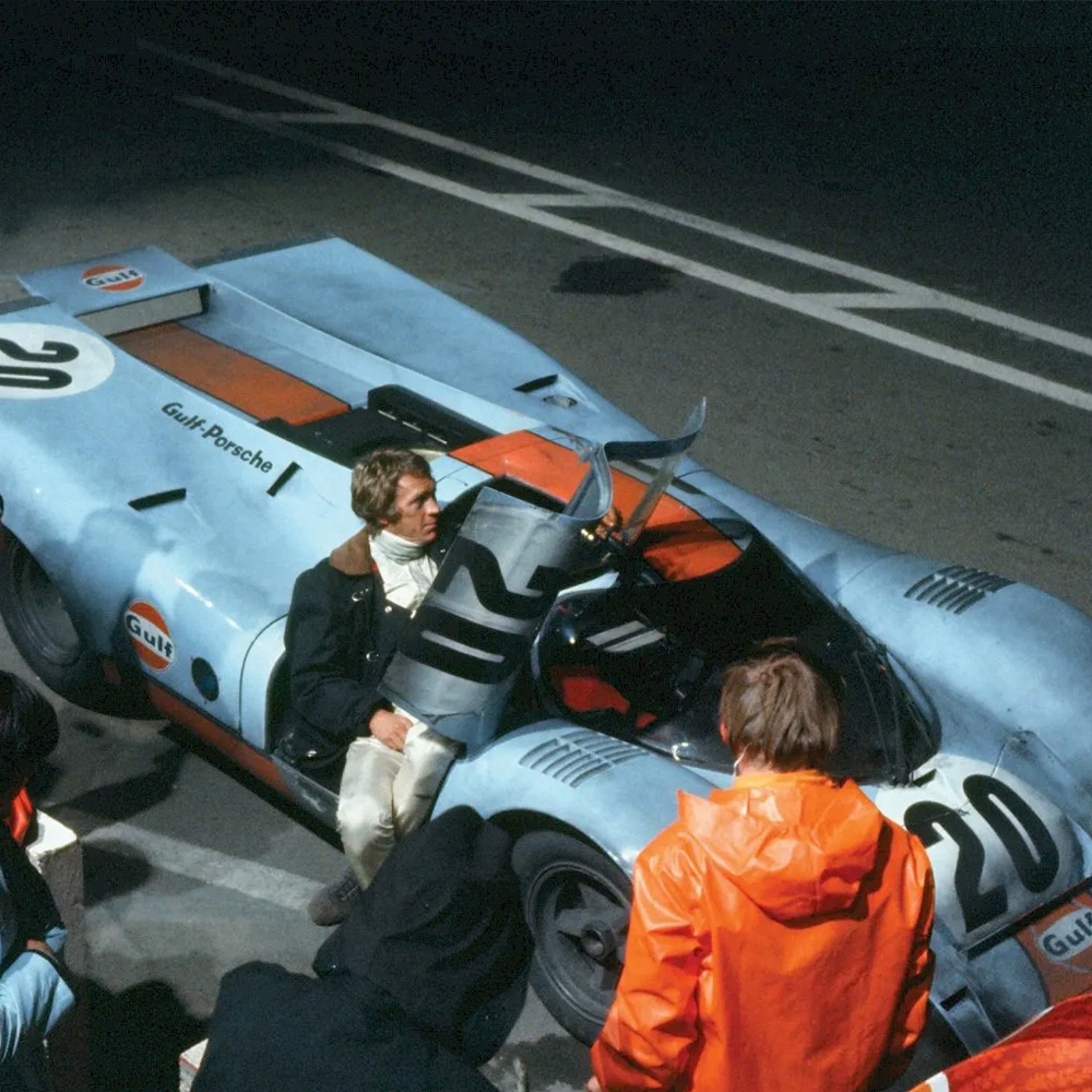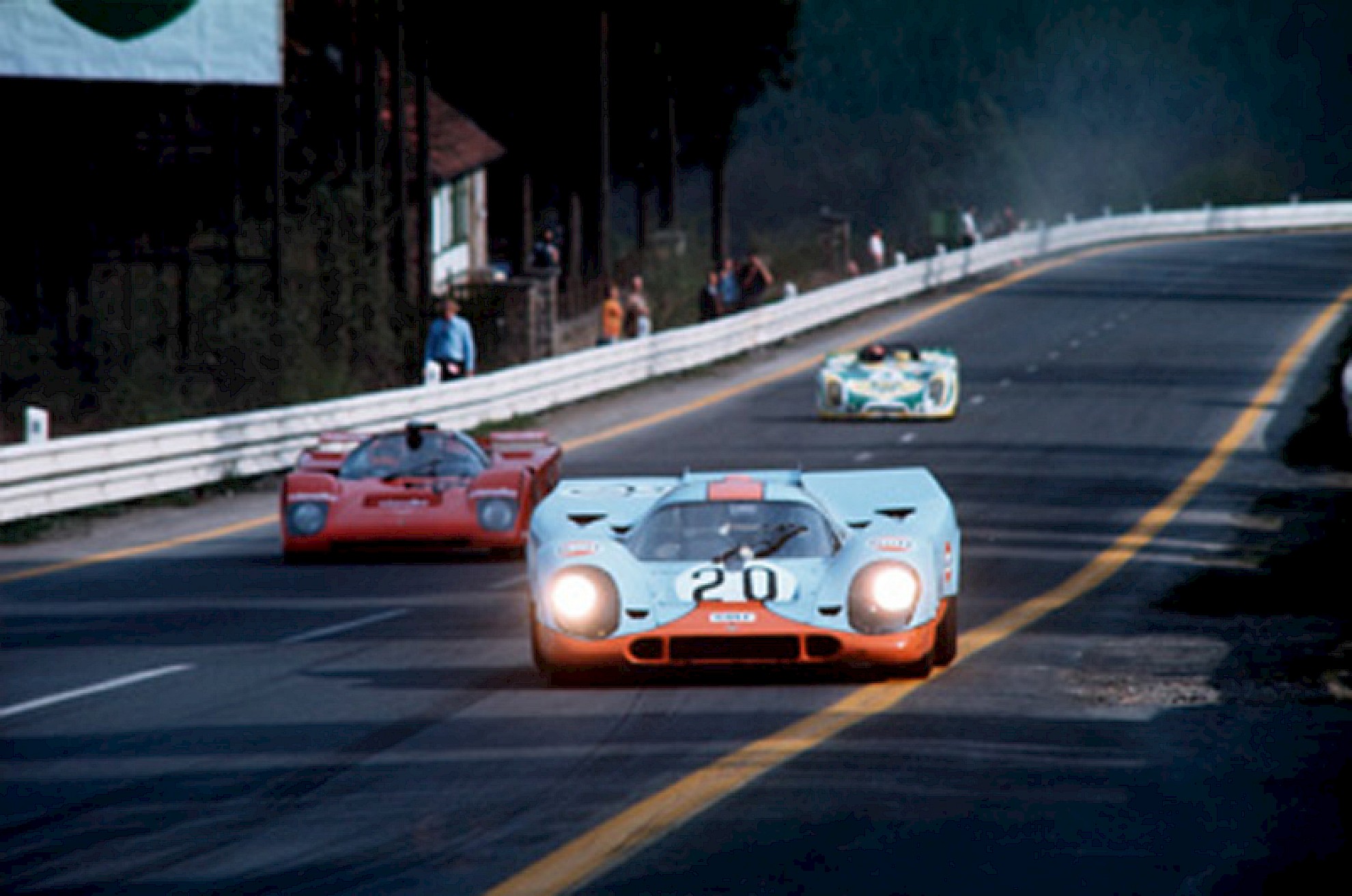Steve McQueen’s Porsche 917: Searching for a Chassis
Theatrical release poster by Tom Jung
Source: IMDB.com
For the 1970 24 Hours of Le Mans race, a total of eight Porsche 917s were entered. Of those eight, chassis 917-017/004, 917-016 and 917-026 participated in Gulf Oil blue and orange livery. 917-017/004 was driven by Jo Siffert and Brian Redman as No. 20, but an over-revved engine destroyed the crankcase at 1:30am resulting in a DNF. 917-016 was driven by Pedro Rodriguez and Leo Kinnunen as No. 21, also getting a DNF due to engine failure on lap 22. 917-026 was driven by David Hobbs and Mike Hailwood as No. 22 but spun out on lap 49 during heavy rainfall.
917-026 being removed from the track, hanging from a crane. Picture credit: Rainer Schlegelmilch
Source: FlatSixes.com
Three Porsche 917KH in Gulf Oil livery, on the set of Le Mans. Picture credit: Unknown
Source: FlatSixes.com
David Piper and Steve McQueen on location for filming of Le Mans (1971). Picture credit: Unknown
Source: IMDB.com
The remains of one half from the crashed 917-013 chassis. Picture credit: Michael Keyser
Source: FlatSixes.com
917-024-2 was used in the No. 22 livery and loaned for filming by racing driver Jo Siffert, along with several other cars. In the film, No. 22 races to victory aided by Michael Delaney’s driving in No. 21. After filming, Siffert drove the car to his birthday celebration on July 7, 1971. Sadly, 917-024-2 later led the funeral procession upon Jo Siffert’s untimely and unfortunate death on October 24, 1971. The car was eventually sold to a private collector, before disappearing for nearly 30 years. In 2001, 917-024-2 resurfaced after being discovered in a shed in the French countryside. Following a full restoration, the Porsche 917KH was sold at auction in California for a record-breaking $14,080,000 on August 18, 2017.
Jo Siffert's 917KH (917-024-2) restored for the auction. Photo credit: Mathieu Heurtault / Gooding & Co.
Source: LA Times
Chassis 917-022 was purchased from Porsche by Steve McQueen’s production company. Originally, McQueen had planned to enter this car in the 1970 24 Hours of Le Mans race as No. 26, but due to the risk involved his entry was vetoed by those invested in the production. 917-022 was sprayed in the livery of No. 20, the car which Michael Delaney (Steve McQueen) starts the race driving. Part way through the film, No. 20 crashes and is taken out of the race, though in reality this scene was filmed with a Lola T-70 chassis made to look like a 917!
With 917-022 no longer needed as No. 20 for the film, it is believed to have been repainted in the livery of No. 21 following the crash with David Piper. Fittingly, Steve McQueen as Michael Delaney takes over driving of No. 21 towards the end of the film, meaning he continued to drive the car he owned. When looking for “Steve McQueen’s 917“, chassis 917-022 is the one.
Steve McQueen sitting in No. 20 (chassis 917-022) on the set of the film. Picture credit: Unknown
Source: FlatSixes.com
In June of 1971, with an estimated budget of $7.6 million and another $2 million spent on promotion, Le Mans was released. Behind the scenes, the film had cost McQueen even more: his marriage, his production company, and many friendships. The film failed to earn back its cost, having gone close to $1.6 million over-budget, and McQueen didn’t attend the premiere.
Despite this, Le Mans became a cult film over time. McQueen had wanted to make more of a documentary than a traditional Hollywood blockbuster; with its meticulous attention on the race and the cars, rather than the drivers and drama, Le Mans is one of the most exciting and realistic racing movies ever made – the ultimate racing movie.
Porsche 917KH No. 20, during the 1970 24 Hours of Le Mans race. Picture credit: Unknown
For more information on the Porsche 917s featured in Le Mans, take a look at Gianni Cabiglio’s article on Flatsixes.com:
Le Mans 24 vs. Le Mans the Movie: The Real Porsche 917

